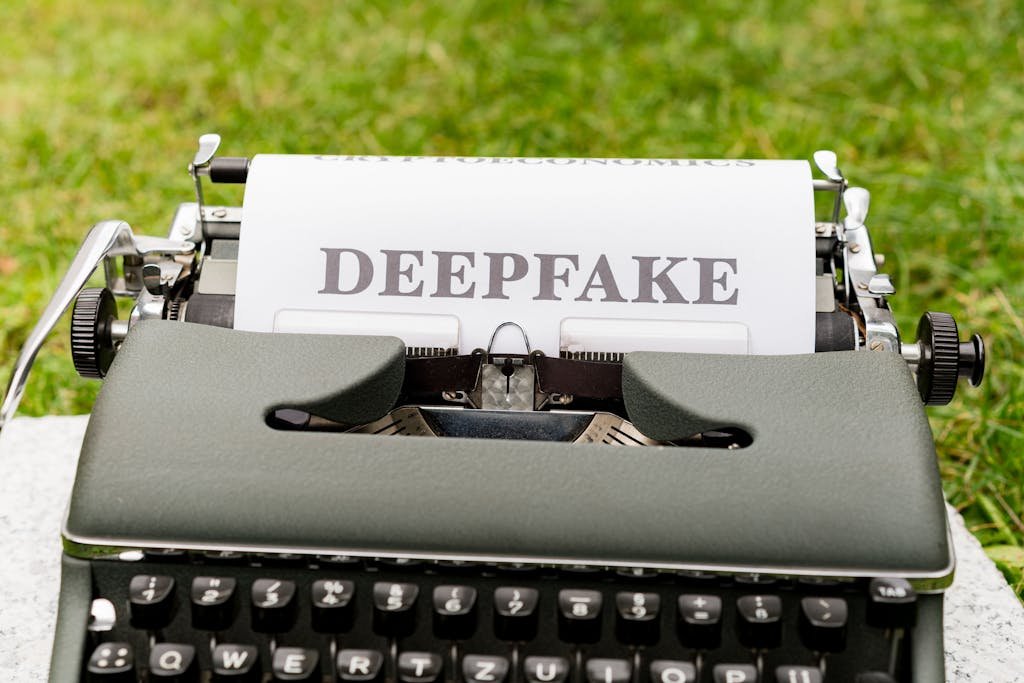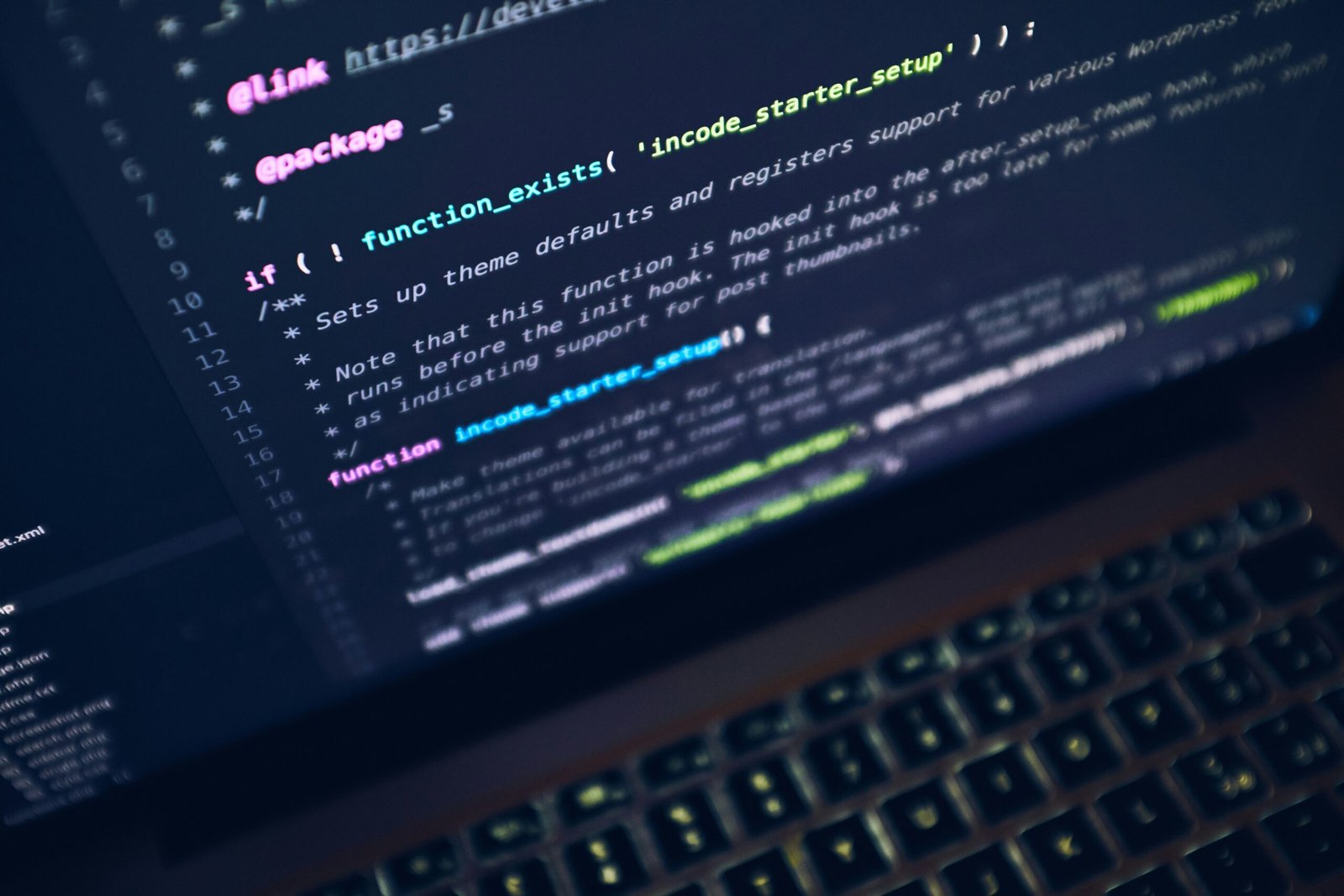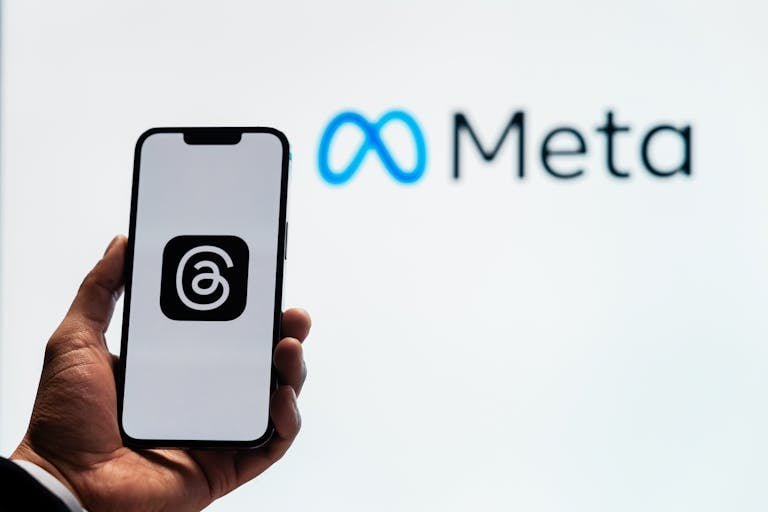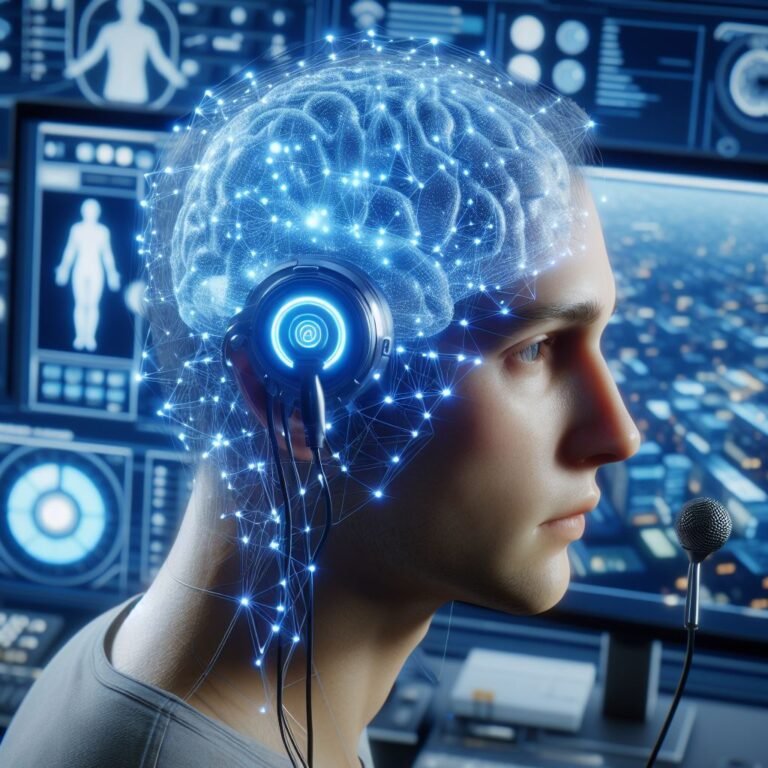Understanding and Mitigating the Risks of Deepfake Videos in Social Media
Introduction to Deepfake Technology
Deepfake technology represents a significant advancement in the field of artificial intelligence and machine learning, enabling the creation of highly realistic fake videos and voice content. This innovative technology uses deep learning algorithms, particularly generative adversarial networks (GANs), to manipulate or generate visual and audio data that convincingly mimic real people. The term “deepfake” itself is a portmanteau of “deep learning” and “fake,” highlighting the core techniques used to produce these deceptively authentic media.
The development of deepfake tools can be traced back to the early 1990s, when researchers began experimenting with rudimentary forms of video manipulation. However, it wasn’t until the advent of sophisticated machine learning frameworks in the late 2010s that deepfake technology truly began to flourish. These advances allowed for the creation of high-fidelity fakes that could seamlessly blend into real footage, often making it difficult for the untrained eye to distinguish between genuine and manipulated content.
As the technology has evolved, so too has its accessibility. Initially confined to academic and research settings, deepfake tools are now widely available, with numerous online platforms offering user-friendly interfaces for creating deepfake content. This increasing sophistication and accessibility have led to a surge in the production and dissemination of deepfake videos on social media, raising significant concerns about their potential misuse.
Deepfake technology holds both promise and peril. On one hand, it offers exciting possibilities for creative industries, such as film and entertainment, where it can be used to generate special effects or resurrect historical figures for educational purposes. On the other hand, the potential for malicious use, including misinformation, identity theft, and cyberbullying, poses serious ethical and security challenges. As we delve deeper into understanding and mitigating the risks associated with deepfake videos in social media, it is crucial to recognize both the capabilities and the dangers inherent in this transformative technology.

The Rise of Deepfake Videos on Social Media
In recent years, the advent of deepfake technology has significantly transformed the landscape of social media. These highly realistic, yet fabricated, videos are crafted using artificial intelligence to superimpose one person’s likeness onto another’s body, creating a convincingly deceptive visual. The proliferation of deepfake videos on social media platforms has rapidly accelerated, owing to both the ease of access to sophisticated AI tools and the viral nature of digital content.
One of the most concerning aspects of deepfake videos is their potential to spread like wildfire across various social media channels. Once uploaded, these videos can be shared and re-shared by countless users, reaching a global audience within a matter of hours. The speed at which deepfake content can go viral is unparalleled, making it a potent tool for misinformation and manipulation. Social media algorithms, designed to prioritize engaging content, often inadvertently amplify these deceptive videos, thereby increasing their reach and impact.
The consequences of the widespread dissemination of deepfake videos are profound and multifaceted. For individuals, the damage can be deeply personal and long-lasting. Deepfakes can be employed to create false narratives, leading to reputational harm, emotional distress, and even financial loss. Public figures, in particular, are frequent targets, with deepfakes potentially swaying public opinion and affecting their careers. For organizations, the risks are equally severe. Deepfake videos can be used to defraud companies, manipulate stock prices, or cause significant brand damage.
Moreover, the societal implications of deepfake videos are troubling. They contribute to the erosion of trust in digital content, making it increasingly difficult for users to discern fact from fiction. This growing skepticism can undermine the credibility of legitimate news sources and disrupt informed public discourse. As deepfakes become more sophisticated and accessible, the urgency to address their spread on social media becomes paramount.
Common Uses of Deepfake Videos for Malicious Purposes
Deepfake videos have emerged as a potent tool for a variety of malicious activities, exploiting the ease with which they can be disseminated across social media platforms. One of the primary malicious uses of deepfake technology is phishing. Cybercriminals craft convincing videos of trusted figures, such as company executives or public officials, to deceive viewers into divulging sensitive information. For instance, a deepfake video of a CEO requesting immediate financial transfers could lead to significant losses for a company.
Another prevalent use of deepfake videos is extortion. By fabricating compromising footage of individuals, wrongdoers can demand ransom to prevent the release of the material. Such tactics have been employed in numerous instances where the mere threat of exposure has coerced victims into compliance. A notable case involved a deepfake video of a prominent individual in a compromising situation, which was used to extract a substantial sum of money to keep the video from being publicized.
Defamation is also a significant concern associated with deepfake videos. These videos can be created to falsely depict individuals engaging in inappropriate or illegal activities, thereby damaging their reputation and credibility. Politicians and celebrities are frequent targets of such attacks, aimed at swaying public opinion or undermining their professional standing. An example of this is the deepfake video of a well-known political figure, which was widely circulated to tarnish their image and influence electoral outcomes.
Furthermore, deepfakes have been weaponized to manipulate public opinion on a larger scale. By disseminating altered videos that misrepresent facts or events, malicious actors can create false narratives that influence social and political landscapes. This manipulation can lead to widespread misinformation and erode public trust in media sources.
Overall, the potential for deepfake videos to be used for phishing, extortion, and defamation underscores the urgent need for awareness and mitigation strategies to combat these threats effectively.
How Deepfake Videos are Created
Deepfake videos are the product of sophisticated artificial intelligence (AI) and machine learning (ML) techniques, which enable the creation of highly convincing fake content. The process typically begins with the collection of large datasets of images or videos of the target individual’s face. These datasets are crucial as they provide the necessary input data to train the algorithms responsible for generating the deepfake.
One of the most commonly used software for this purpose is DeepFaceLab. This open-source tool leverages advanced neural networks to perform face-swapping tasks. The creation of a deepfake video involves several key steps. Initially, the software detects and extracts facial landmarks from the input images or videos. These landmarks are essential for understanding the geometric structure of the face, which is pivotal for accurate face-swapping.
Subsequently, the software employs a generative adversarial network (GAN) architecture, consisting of two neural networks: the generator and the discriminator. The generator’s role is to create synthetic images that resemble the target’s face, while the discriminator evaluates these images for authenticity. Over multiple iterations, the generator improves its output to the point where the discriminator can no longer distinguish between real and fake images.
Once the facial features are accurately synthesized, the next step involves blending these features seamlessly into the original video. This requires additional processing to ensure that the synthesized face exhibits natural expressions and movements that align with the body language and context of the original footage. Tools like DeepFaceLab offer various post-processing options to refine the final output, enhancing its realism.
Creating a convincing deepfake video also demands significant computational resources. High-performance GPUs are typically required to handle the extensive calculations involved in training the neural networks. Additionally, the process requires substantial time and expertise in handling AI and ML technologies, making it accessible primarily to individuals or groups with advanced technical skills.

Case Studies: Examples of Harmful Deepfake Videos
Deepfake technology has made it increasingly difficult to distinguish between authentic and manipulated content, leading to significant consequences for individuals targeted by these videos. One notable case involved a prominent journalist who was falsely depicted in a deepfake video engaging in illegal activities. This video not only tarnished the journalist’s reputation but also led to severe professional repercussions, including suspension from work and a lengthy legal battle to clear their name. The emotional and psychological toll on the journalist was immense, highlighting the profound personal impact of deepfake videos.
Another alarming case occurred within the political arena, where a deepfake video was disseminated showing a government official making inflammatory statements. This video, though entirely fabricated, caused widespread public outrage and led to protests. The official faced immense scrutiny and had to spend significant resources to refute the claims and restore public trust. The incident underscored the potential of deepfake videos to destabilize political environments and incite unrest.
In the entertainment industry, a famous actor became the victim of a deepfake video that falsely portrayed them in a compromising situation. The video went viral, leading to a media frenzy and severe damage to the actor’s public image. This case illustrated how deepfake videos could exploit the public’s fascination with celebrity scandals, causing both personal and professional harm to the individuals involved. The actor’s career suffered, with lost job opportunities and a tarnished reputation despite their efforts to prove the video’s inauthenticity.
These case studies demonstrate the severe consequences that deepfake videos can have on individuals’ lives and careers. The malicious use of this technology to create and spread false information poses significant risks, emphasizing the urgent need for effective measures to detect and mitigate the impact of deepfake videos. Enhanced awareness, technological advancements, and legal frameworks are essential to protect individuals from the harmful effects of deepfakes.
Detecting Deepfake Videos
The proliferation of deepfake videos on social media has necessitated the development of both manual and automated detection techniques. These methods aim to identify the subtle manipulations that differentiate a deepfake from authentic footage. Each approach has its own advantages and limitations, and a combined strategy is often the most effective.
Manual detection typically involves human experts who scrutinize video content for inconsistencies. This process leverages the human eye’s ability to detect anomalies in facial expressions, lighting, and movements. For instance, unusual blinking patterns, unnatural facial tics, or mismatched lighting can be red flags. However, manual detection is time-consuming and relies heavily on the expertise of the individual, making it less scalable for widespread social media platforms.
On the other hand, automated solutions use complex algorithms and machine learning models to identify deepfake videos. These tools analyze various aspects of the video, such as facial features, audio inconsistencies, and pixel-level details. One popular method involves convolutional neural networks (CNNs) that can detect minute discrepancies in the video frames. Additionally, deep learning models trained on large datasets of deepfake and real videos can achieve high accuracy rates. Tools like FaceForensics++, DeepFaceLab, and Microsoft’s Video Authenticator are notable examples of automated detection systems.
Despite their sophistication, automated detection systems are not foolproof. Deepfake videos are becoming increasingly sophisticated, often outpacing the capabilities of existing detection tools. Moreover, these systems can be computationally intensive, requiring significant processing power and resources. They may also produce false positives, flagging legitimate content as deepfakes, which can undermine their reliability.
In summary, detecting deepfake videos requires a multi-faceted approach. While manual methods offer a human touch that can catch subtle inconsistencies, automated solutions provide scalability and efficiency. By leveraging both strategies, social media platforms can better mitigate the risks posed by deepfake videos, ensuring a more secure and trustworthy online environment.
Preventive Measures to Avoid Falling Victim to Deepfakes
In the digital age, safeguarding oneself and one’s organization against deepfake scams requires a multi-faceted approach. One of the primary measures is to always verify the source of videos before accepting them as authentic. This involves checking the credibility of the platform or individual sharing the content. Trustworthy sources are less likely to disseminate manipulated media. Additionally, cross-referencing with other reputable news outlets or official statements can help confirm the legitimacy of the information.
Another effective strategy is employing advanced detection tools specifically designed to identify deepfake videos. These tools utilize artificial intelligence and machine learning algorithms to analyze inconsistencies in the video, such as unnatural facial expressions, irregular blinking patterns, or audio-visual mismatches. Incorporating such technology can be particularly beneficial for organizations that are more likely to be targeted by deepfake scams.
Moreover, educating oneself and one’s team about the potential threats posed by deepfakes is crucial. Awareness training can empower individuals to recognize warning signs and adopt a cautious approach when encountering suspicious media. Regular workshops and updates on the latest deepfake trends and detection techniques can keep everyone informed and vigilant.
Additionally, fostering a culture of critical thinking and skepticism can significantly reduce the chances of falling victim to deepfakes. Encourage questioning the authenticity of sensational or emotionally charged content, as these are often prime targets for manipulation. Promoting digital literacy and encouraging the use of fact-checking websites can also contribute to a more discerning audience.
By combining these preventive measures—verifying sources, utilizing advanced detection tools, and prioritizing education—both individuals and organizations can significantly enhance their resilience against deepfake threats. In an era where digital deception is increasingly sophisticated, staying informed and prepared is the best defense.
Future of Deepfake Technology and Its Regulation
As we look ahead, the landscape of deepfake technology continues to evolve at a rapid pace. With advancements in artificial intelligence and machine learning, the creation of highly realistic deepfake videos is becoming increasingly sophisticated. This progression raises both exciting possibilities and significant concerns. On one hand, deepfakes hold potential for positive applications such as in the entertainment industry, where visual effects can be enhanced without the need for extensive physical setups. On the other hand, the malicious use of deepfakes poses a severe threat to information integrity, personal privacy, and public trust.
The future trends in deepfake technology suggest that these videos will become even more indistinguishable from reality. Improvements in algorithms and access to more extensive datasets enable the generation of deepfakes that can mimic human expressions, voice, and mannerisms with heightened accuracy. This progression underscores the urgent need for robust regulatory frameworks to mitigate the associated risks.
Regulation of deepfake technology is becoming increasingly crucial. Governments and international bodies are beginning to recognize the potential dangers and are taking steps to address them. Legislative measures are being introduced to criminalize the malicious creation and distribution of deepfake videos. For instance, some countries are enacting laws that impose severe penalties on individuals and organizations found guilty of using deepfakes to deceive or harm others.
Tech companies also play a pivotal role in combating the risks posed by deepfakes. Platforms like Facebook, Twitter, and YouTube are implementing policies to detect and remove deceptive deepfake content. Collaborations between tech firms and research institutions are fostering the development of advanced detection tools, which utilize AI to identify deepfakes with higher accuracy. These efforts are crucial in maintaining the integrity of digital content and protecting users from misinformation.
In conclusion, while the future of deepfake technology holds promising advancements, it also necessitates vigilant regulation and proactive measures by both governments and tech companies. Ensuring a balance between innovation and security will be key to mitigating the risks associated with deepfakes in the evolving digital landscape.
For more articles related to technology, please browse around InnoVirtuoso and find more interesting reads.







